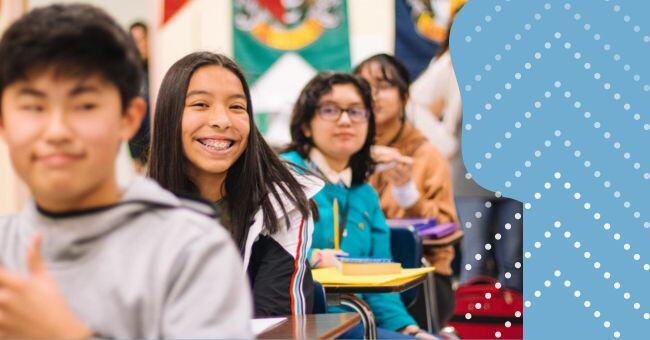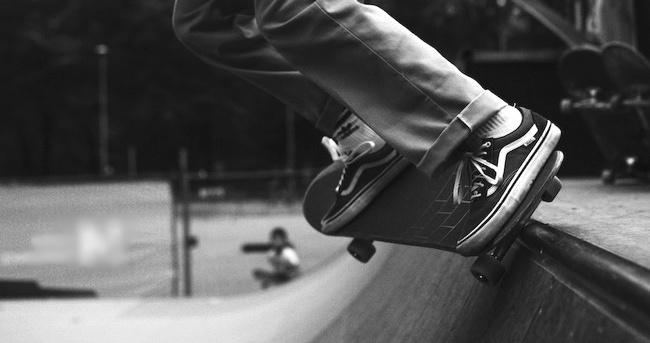Careers Education, belief and the hippo in the road
You could hear a pin drop. It's a Wednesday afternoon and we're in a Professional Learning session with a dedicated group of high school teachers...

Most educators, parents and specialists would agree: the transition from Primary to High School can be challenging.
Students have to get used to different school structures. Academic standards and teacher expectations aren’t the same as in Primary. Not to mention huge changes in adolescents' social sphere -- getting to more autonomy and responsibility while at the same time navigating puberty, change and constantly shifting social dynamics.
How can careers education in upper primary help students transition to secondary school and navigate their growing personal autonomy?
Student engagement in learning tends to drop in the transition years, reaching its lowest level in about year 9, age 14-15 (source: Gallup Student Engagement Poll).
As Anne Coffey from the University of Notre Dame, WA explains: ‘During the early adolescent years students are required to negotiate the move from primary to secondary school at around the age of 11. Changing schools presents both opportunities and challenges, with the associated need for students to adapt and cope (Elias, 2001). This move generally entails a change of school campus, mixing with a new and different peer group, learning new forms of school organization and having a number of teachers, many of whom will have very different teaching styles.’ (Coffey, Anne 2013, Relationships: The key to successful transition from primary to secondary school?)
Ultimately, a transition program of some form which may be coordinated between a local primary and secondary school can positively help each new cohort of students navigate the transition.
If this is done well, student can better take advantage of the opportunities high school presents, such as specialist subjects and teachers, extracurricular activities and increased autonomy. 
Research into transition programs suggests that building relationships is crucial – especially relationships in which the young adolescent feels secure, and is seen and known.
Careers education is a chance to discuss your ideas and personal aspirations, strengths and interests.
It can be designed to be a safe environment in which to be seen, to explore and articulate multiple possible idea of who ‘future me’ might be.
In the NSW Educational Pathways Program (EPP), this is the approach to careers education taken by the Liverpool cluster of primary and secondary schools. They used careers as a transition bridge, with great success.
They recognised that the Department's vision of every student feeling known, valued and cared for, is far easier to deliver in primary structure, where students do the majority of their learning with one teacher (or a few teachers at most).
Using the BECOME program for open careers exploration, these schools were able to easily capture pre- and post-BECOME data to get a clear picture of student aspirations and ideas.
This shift in approach means students are seen and known for who they might become. It puts students in the driving seat before they get to high school, prompting them to think about which opportunities they can take up when they get to secondary school. Ultimately, the BECOME career education program helps ease students' transition.
"Career Learning is a journey. With BECOME students start their journey to research, reflect and discuss the possibilities of their future careers. They transition into high school with a knowledge of career possibilities that they can further explore so that they can make informed decisions".
Joyce Choucair, HeadTeacher Careers, Educational Pathways Program.
Let’s look into the results of their work as a case study in using careers education to assist with the transition to high school:
To establish this Community of Practice, the Education Pathways Program (EPP) Headteacher Careers for the Liverpool cluster of schools (NSW) worked in close partnership with the Director of Educational Leadership to launch and host the initiative.
They kicked it off with all principals by hosting a short presentation and discussion led by BECOME. This focused on evidence and findings about the impact careers education in upper primary can have on successful primary-secondary transitions, academic engagement, student wellbeing and equity outcomes.
Next, they hosted a joint professional development day for schools taking part in BECOME. This was designed to build experience and confidence using the BECOME program and tools. Staff from participating schools co-designed the roll-out while thinking specifically about their context and student body.
Across the cluster, the result was overwhelmingly positive! With their permission, we're going to drill down a little more into the experience of two of these innovating schools.
 The two schools saw some incredible uplifts across key metrics:
The two schools saw some incredible uplifts across key metrics:
1. Broader exploration leads to awareness of more possible futures
OECD PISA data measures the concentration of student career aspirations.
At a global and national level the concentration hovers around 50% of students aspiring to just 10 occupations. At an individual school and cohort level we often see that effect double (just 5 occupation areas).
Both of the upper primary cohorts in this case study started by 50% of the cohort aspiring to the top 4 most popular career areas. However, given the chance to explore, in both cases students' ideas broadened significantly, showing that they are aware of more possible options for themselves -- options that spark personal interest.
At both schools more than 60% of students reported that they discovered new career possibilities that interest them for their future. The experiments we saw at the Flipped Career Expo demonstrated this broadened field of vision and were more diverse than the usual top ten careers students typically name.
2. Feeling known
Before the BECOME program we ask all students whether they feel a teacher or adult at school knows their ideas for their future.
At Years 5-6 / Stage 3 we often see 80% of students responding that they think about their future often or all the time. And yet less than 10% of the same students say a teacher or adult at school knows about their ideas for their future.
Articulating a career aspiration to a teacher is one of the Career Readiness Indicators defined by the OECD (OECD 2021, Indicators of Teenage Career Readiness). When students' aspirations are not known, they are less likely to pursue them.
For the schools in this case study, after the program we saw a significant increase in this metric with one of the schools showing a 205% uplift! We think this could be the effect of having the senior school principal spend so much time in conversation with primary students at the Flipped Career Expo and making the links to learning at high school. The evidence shows that these students are known and seen, and that career conversations about their ideas, motivation and aspirations for the future contributed significantly to this.
3. Connected and engaged in learning
As well as giving young people the chance to explore and design future possibilities, careers education with BECOME also helps students make simple but critical connections between their learning and engagement at school now, and their hopes and dreams for their future.
Both schools (in line with all our schools) saw an uplift of at least 20% in connection and engagement with learning today.
4. Agency & bias to action
We often hear from secondary teachers that a big challenge to student aspirations is apathy. A benefit of doing this work in upper primary is that we can harness the natural curiosity of Year 6 students and spark them into action.
Students in both schools showed increased confidence that they can take action on their ideas for their future and 92% of the students at one of the schools agreed that they will definitely keep doing things that move them towards their ideas for their future. Agency in action!
The schools in the Liverpool EPP cluster are seeing huge positive benefits as a result of this considered, co-designed approach. This is the initial data and as more student cohorts come through we anticipate a bigger picture. Here's what they're doing next:

Explore how the BECOME program for upper Primary seeds lots of careers ideas as students try on multiple ideas for the future.
Find out about our impact on engagement through BECOME for Secondary. BECOME changes as students change and grow. It's perfectly designed for a multi-year or whole school rollout.

You could hear a pin drop. It's a Wednesday afternoon and we're in a Professional Learning session with a dedicated group of high school teachers...

What if every student in your classroom saw the reason for what they are learning at school? What if they understood the WHY? Why their learning is...

Student agency. It's the secret ingredient that we're all after. By agency, we mean young people taking active control over their life and...